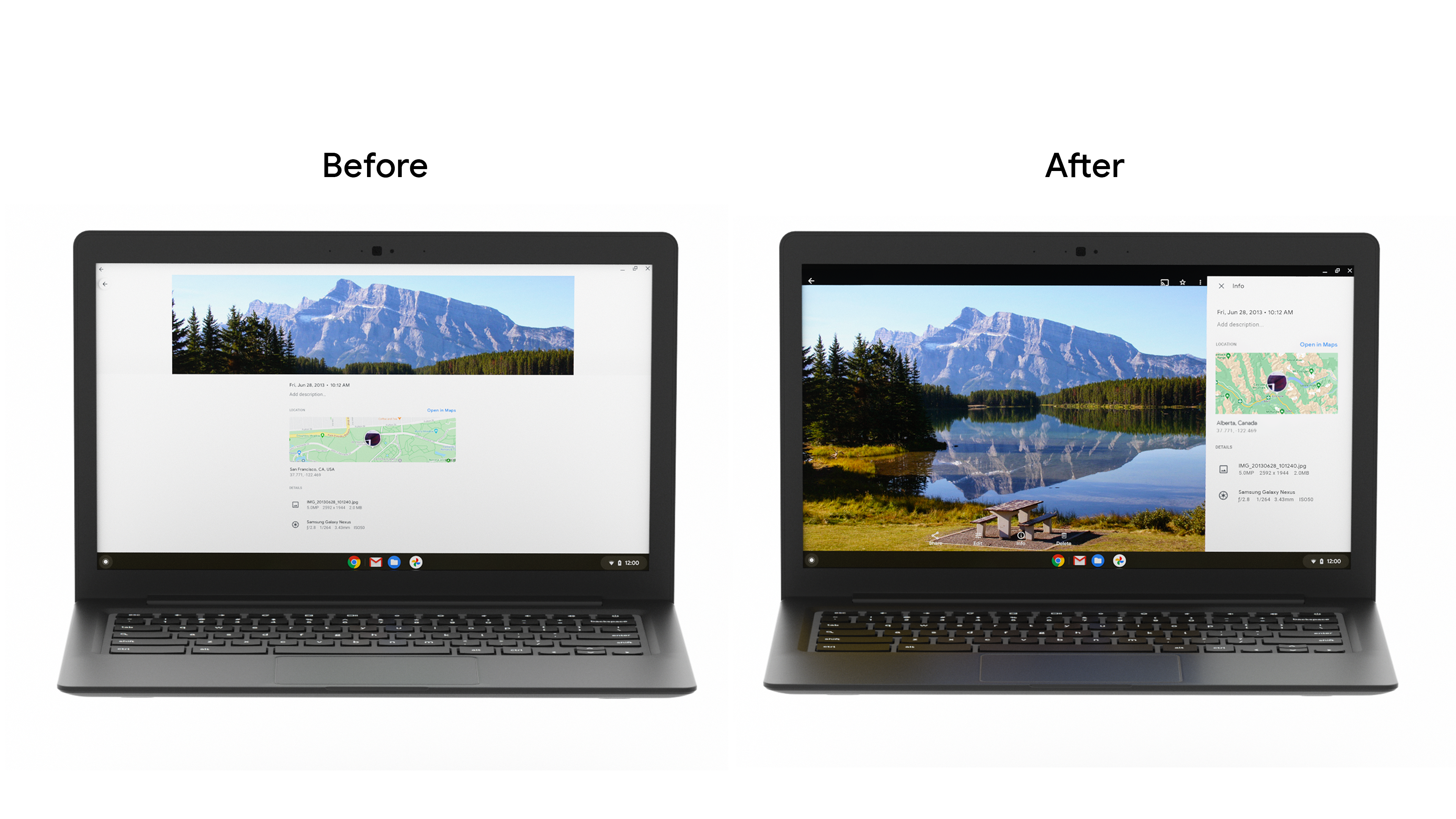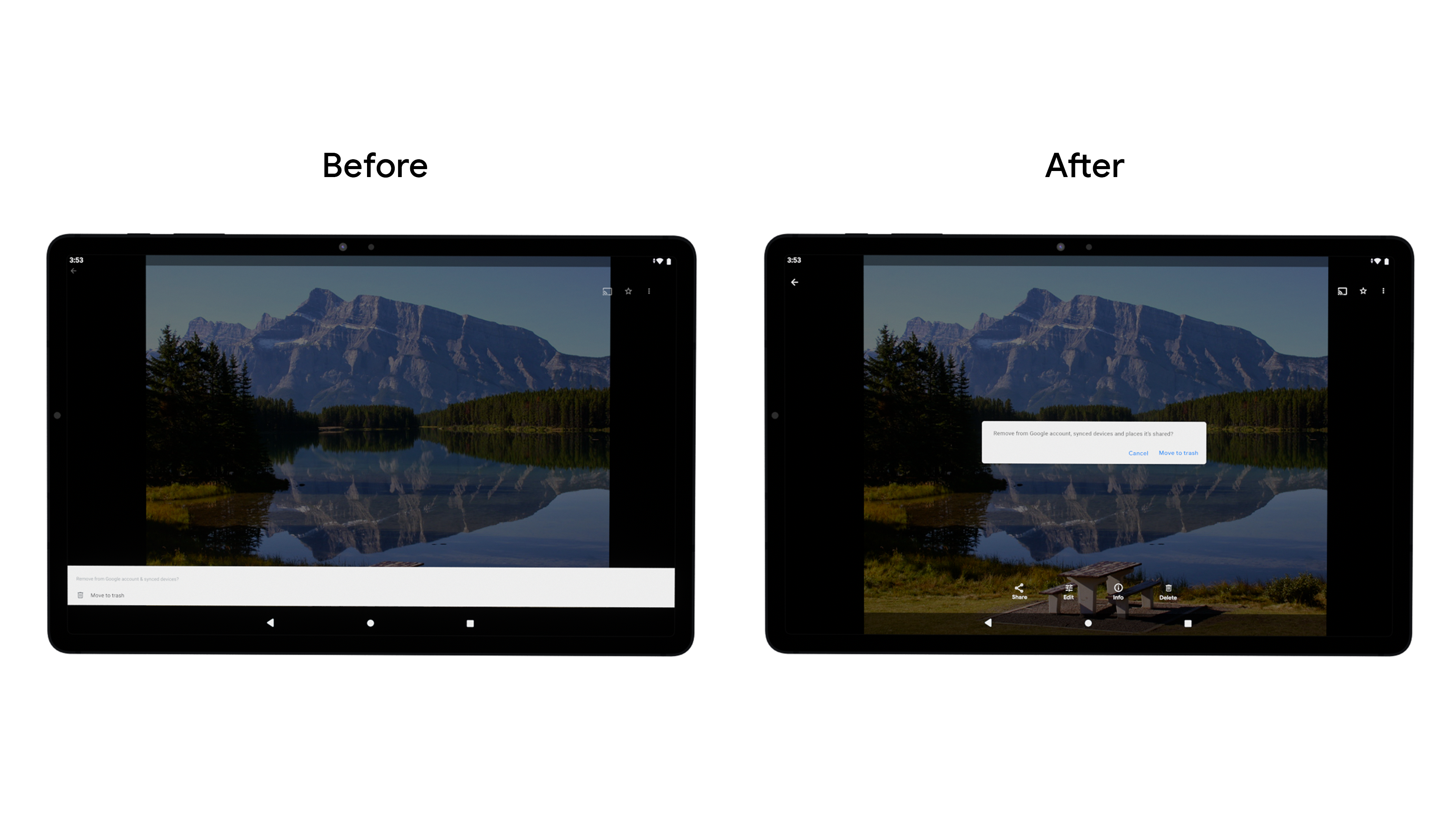Google 포토는 추억을 위한 공간이며, Google 포토의 개발팀은 사람들이 모든 기기에서 추억을 즐길 수 있어야 한다고 생각합니다. 이 앱의 기능이 Android 태블릿, 폴더블, ChromeOS 기기에서 원활하게 작동하도록 하기 위해 모든 화면에서 반응형 레이아웃을 개발하는 데 투자했습니다.
진행한 작업
Google 포토 개발팀은 대형 화면에 맞게 레이아웃을 수정하는 방법을 검토했습니다. 또한 사용성 권장사항과 연구를 바탕으로 대형 화면에 맞게 레이아웃을 수정하는 방법을 결정했습니다. 먼저 화면 크기가 증가(태블릿의 경우 600dp 이상, 노트북의 경우 1008dp 이상)할 때 밀도를 줄여 그리드 레이아웃을 개선했습니다. 이를 통해 사용자는 더 큰 폼 팩터에서 사진을 더 쉽게 보고 스크롤할 수 있게 되었습니다.

그런 다음 정보 패널 하단 창을 사이드바로 대체했습니다. 태블릿과 데스크톱의 화면은 가로 모드로 사용되는 경우가 많으므로, 이러한 변경사항을 통해 큰 화면에서 늘어나는 현상을 줄이고 태블릿 사용자가 더 인체공학적으로 기기를 들고 사용할 수 있도록 했습니다. 또한 하단 시트 대화상자를 개선하고 대형 화면에서 사용자 메시지를 더 쉽게 표시할 수 있도록 스낵바를 추가했습니다.

팀은 탐색 구성요소를 하단 메뉴에서 세로 레일로 변경하여 사용자가 더 쉽게 작업을 탐색하고 완료할 수 있도록 했습니다. Google 포토에서는 자체 코드베이스 내에서 이를 빌드했지만 개발자는 새로운 탐색 레일 머티리얼 구성요소를 사용하여 빌드할 수 있습니다. 이를 통해 인체공학을 개선하고 늘어나는 양을 줄이며 세로 스크롤 앱의 화면 공간을 늘릴 수 있습니다.
또한 개발팀은 그리드 크기 조절을 동적으로 만들어 다양한 상태와 화면 크기 간 전환을 간소화하고 키보드 및 스타일러스 펜과 같은 액세서리에 제공되는 지원을 개선했습니다. 생산성을 위해 ChromeOS 기기를 사용하는 소비자가 점점 늘어나면서 앱에서 키보드, 마우스, 터치 등 다양한 입력 방법을 지원하도록 하는 것이 점점 더 중요해지고 있습니다.
결과
팀은 A/B 테스트를 통해 이러한 변경사항을 출시한 결과, 대형 화면에서 주요 제품 기능의 DAU가 전반적으로 증가했으며, 보관 파일의 사용량이 53% 나 증가한 것을 확인했습니다. Google 포토팀은 모든 기기에서 뛰어난 환경을 제공할 수 있도록 모든 화면 크기에서 사용자 환경을 개선하는 데 지속적으로 투자할 것입니다.
시작하기
큰 화면에 맞게 앱을 최적화하는 방법을 자세히 알아보세요.

